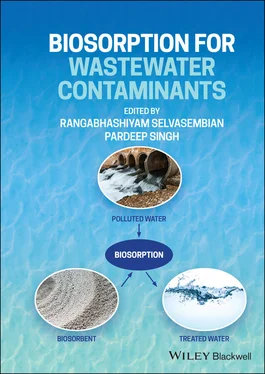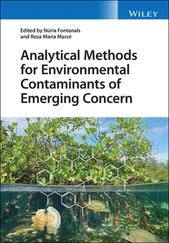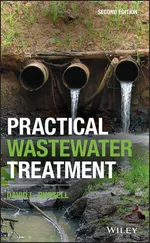Library of Congress Cataloging‐in‐Publication data applied for
HB ISBN: 9781119737599
Cover Design: Wiley
Cover Images: © Chanin Wardkhian/Getty images; krystiannawrocki/Getty Images; Image Source/Getty Images
Abhishek Agrawal School of Pharmaceutical Sciences Pratap University Jaipur Rajasthan India
Pinki Rani Agrawal CSIR National Physical Laboratory New Delhi India and Academy of Scientific and Innovative Research (AcSIR) Ghaziabad Uttar Pradesh India
R. Balaji Department of Biotechnology Aarupadai Veedu Institute of Technology Chennai Tamilnadu India
João Paulo Bassin Chemical Engineering Program COPPE Federal University of Rio de Janeiro Rio de Janeiro Brazil and Civil Engineering Program COPPE Federal University of Rio de Janeiro Rio de Janeiro Brazil
Subramanyam Busetty School of Civil Engineering SASTRA Deemed University Thanjavur Tamilnadu India
Ramprasad Chandrasekaran School of Civil Engineering SASTRA Deemed University Thanjavur Tamilnadu India
B. Deepanraj Department of Mechanical Engineering Jyothi Engineering College Thrissur Kerala India
R. Devika Department of Biotechnology Aarupadai Veedu Institute of Technology Chennai Tamilnadu India
João Pedro Neves Goldenstein Civil Engineering Program COPPE Federal University of Rio de Janeiro Rio de Janeiro Brazil
Gaurav Gupta Department of Physics and Astrophysics University of Delhi New Delhi India
Ittishree G.V.M College of Pharmacy Pt. B.D. Sharma University of Health Sciences Sonipat Haryana India
Jay Mant Jha Department of Chemical Engineering Maulana Azad National Institute of Technology Bhopal Madhya Pradesh India
Noel Jacob Kaleekkal Membrane Separation Group Department of Chemical Engineering National Institute of Technology Calicut Kozhikode Kerala India
J. Kanimozhi Department of Biotechnology Kalasalingam Academy of Research and Education Krishnankoil Tamilnadu India
Ravi Kumar CSIR National Physical Laboratory New Delhi India and Academy of Scientific and Innovative Research (AcSIR) Ghaziabad Uttar Pradesh India
Vishal Mishra School of Biochemical Engineering IIT (BHU) Varanasi Uttar Pradesh India
G Nandu Membrane Separation Group Department of Chemical Engineering National Institute of Technology Calicut Kozhikode Kerala India
Rajarathinam Nithya Department of Industrial Biotechnology Government College of Technology Coimbatore Tamilnadu India
Ramesh Oraon Department of Nanoscience and Technology Central University of Jharkhand Brambe Ranchi Jharkhand India
Dan Bahadur Pal Department of Chemical Engineering Birla Institute of Technology Mesra Ranchi Jharkhand India
Camila Pesci Pereira Chemical Engineering Program COPPE Federal University of Rio de Janeiro Rio de Janeiro Brazil
Maheswari Purushothaman Department of Chemistry SRM Valliammai Engineering College SRM Nagar Kattankulathur Tamilnadu India
Bidhan Chandra Ruidas Department of Chemical Engineering Birla Institute of Technology Mesra Ranchi Jharkhand India
Guru Charan Sahu Department of Chemistry Ranchi University Ranchi Jharkhand India
A.B. Sathya Department of Biotechnology Aarupadai Veedu Institute of Technology Chennai Tamilnadu India
Rahul Sharma Department of Chemistry Sabarmati University Ahmedabad Gujarat India
Rahul Sharma AcSIR CSIR‐National Physical Laboratory New Delhi India
Nidhi Singh Centre of Bioinformatics University of Allahabad Prayagraj Uttar Pradesh India
Veer Singh School of Biochemical Engineering IIT (BHU) Varanasi Uttar Pradesh India
R. Sivashankar Department of Chemical Engineering Hindustan Institute of Technology and Science Chennai Tamilnadu India
Arunachalam Thirunavukkarasu Department of Industrial Biotechnology Government College of Technology Coimbatore Tamilnadu India
Amit Kumar Tiwari Department of Chemical Engineering Birla Institute of Technology Mesra Ranchi Jharkhand India
Srihari Vedartham NICMAR Hyderabad Campus at Shamirpet Hyderabad Telangana India
Shashikant Shivaji Vhatkar Department of Nanoscience and Technology Central University of Jharkhand Brambe Ranchi Jharkhand India
Priyanka Yadav School of Biochemical Engineering IIT (BHU) Varanasi Uttar Pradesh India
Today, pollution due to various anthropogenic activities has increased many times. Organic and inorganic pollutants are the most significant problem that humanity currently faces in the broad categories of water pollutants. Although several measures have been proposed and implemented to reduce these pollutants, their increasing concentration in bodies of water has created serious concerns. Over the years, the problem has been aggravated by uncontrolled industrialization and urbanization and the consequent alteration of humanity's natural resources. The direct discharge of wastewater contaminants and their geographical mobilization have led to increased concentrations in ground, surface, and residual waters. Therefore, it is essential to understand this problem today and to control the source. In addition, extensive knowledge of detection and disposal methods is needed to develop technological solutions for various environments, including urban, rural, and urban areas.
The purpose of this book is to provide an information platform about wastewater contaminants in the current context, where researchers, engineers, and technologists working in this field face various challenges. Conventional physicochemical techniques used to remove contaminants from wastewater include ion exchange, precipitation, degradation, coagulation, coating, membrane processes, and adsorption. However, these applications have technological and economic limitations. Biomass‐related precursors for the preparation of biosorbents are attracting increasing attention from researchers. Different activation approaches are used in addition to native biomass utilizations. This book deliberately minimizes basic information and focuses on sources of water pollution, biomass for biosorbent preparation, characterization of biosorbents, understanding associated biosorption mechanisms, modeling analyses of biosorption, sustainable approaches for biosorption applications, and possibilities for recovering precious metals. This book will be a key guide for environmental engineers, researchers, water authorities, and students in these fields.
Rangabhashiyam SelvasembianPardeep Singh
I am extremely pleased to provide the foreword to a book on biosorption that deals with the fundamentals, advancements, and future possibilities of this exciting technology. Biosorption employs the ability of biomass to adsorb different contaminants through various physicochemical mechanisms. A wide variety of biosorbents of different origins have been recognized to have high sorption capacity toward various contaminants. Biosorption mechanisms have been explored by scientists to obtain a basic understanding of the process. Nevertheless, biosorption has seldom been used for real industrial applications. The reasons are many and include lack of experimentation on real industrial effluents, multi‐component studies, and surface functionalization. Thus, a thorough compilation of the biosorption literature and a solid understanding of the biosorption technology’s essentials, progress, and potential are needed. This book, Biosorption for Wastewater Contaminants, offers the complete package.
Читать дальше












